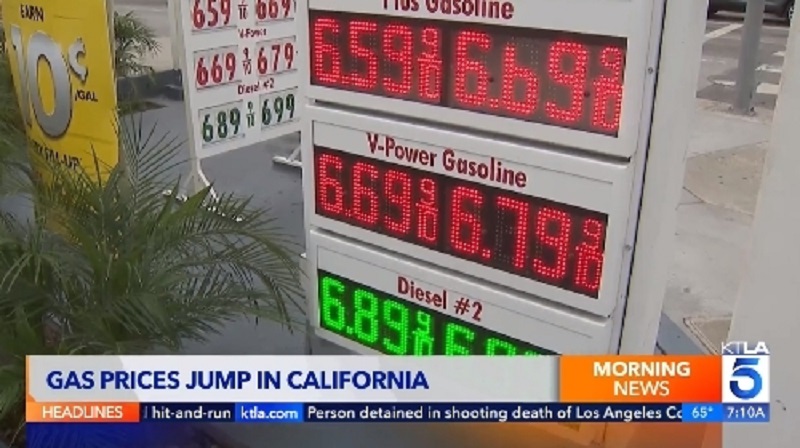
By Dongpil Kim
The author is chief editorial writer of The Korea Daily.
The sight of gas prices at the pump these days is enough to make anyone’s wallet shudder. In the LA and Orange County area, it has soared past the $6-per-gallon mark. This surge comes after enduring two months of almost daily price hikes, with some stations pushing it to the eye-watering $7 range.
For drivers, this rollercoaster of gas price anxiety is all too familiar. It seems like one moment prices are stabilizing, and the next, they’re skyrocketing.
Even a year ago at this time, drivers were grappling with the frustration of surging gas prices. In the Los Angeles area, the average price per gallon had soared to over $6.4, setting a record high. The term “gas inflation” was even coined to capture the sentiment. Gas prices are on the rise for various reasons, including international crude oil price surges and supply shortages stemming from refinery repairs. Regardless of the cause, one constant remains: the burden falls squarely on the shoulders of drivers, who are left “stuck” with the ever-increasing costs.
Southern California drivers are particularly sensitive to these price fluctuations, paying some of the nation’s highest rates at the pump. According to the American Automobile Association (AAA) data as of September 21, the national average gas price was $3.86 per gallon, in stark contrast to the $6.06 in Los Angeles and $6.01 in Orange County. The statewide average stands at $5.79. This means that LA and Orange County drivers are shelling out over $2 per gallon more than the national average. Even if you consume just 10 gallons a week, you’re looking at an extra $22 per week and nearly $100 more per month.
California’s sky-high gas prices are attributed to several factors. First, the state’s hefty taxes and pollution prevention policies play a significant role. Gas taxes in California rank among the nation’s highest at 78 cents per gallon. The state tax alone amounts to 58 cents per gallon, more than double that of other states. To compound the issue, there’s an additional 15 cents per gallon refining fee for summer use.

Another challenge lies in price gouging by refiners. California’s refining industry is heavily controlled by five major companies: Marathon, Valero, Phillips 66, PBF Energy, and Chevron. However, the ratio of gas stations to the number of vehicles on the road is much lower than in other states. Research indicates that California has double the national average of cars per gas station, which reduces price competition. While refiners deny allegations of price gouging, it’s evident that gas prices are more profitable in California than in other states, making refiners the scapegoat whenever prices surge.
During price spikes, the state government often promises a “thorough investigation.” In 2019, when gas prices in California surged to double the national average, Governor Gavin Newsom directed prosecutors to probe whether refiners were colluding, gouging, or overcharging. However, when gas prices eventually stabilized, public interest waned, and the investigation fizzled out.
Last year, in response to yet another surge in gas prices, the government enacted the Refinery Price Gouging Penalty Law. This law alleged that refiners raked in an extra $63 billion in profits in just 90 days due to escalating gas prices. To bolster the law’s effectiveness, an independent watchdog was established under the California Energy Commission to monitor gas prices.
While the law has been in effect since June, there have been no updates thus far. Some reports even suggest that the independent watchdog is not fully staffed. These circumstances have given rise to conspiracy theories suggesting that gas prices may be a distraction from the state’s focus on expanding electric vehicles.
Of course, prices are subject to the laws of supply and demand. However, it remains the government’s duty to ensure that this process remains fair and unimpeded. While effectively intervening in the gas pricing process may be challenging with such a mere showcase policy, it remains crucial to take measures to shield consumers from surging gas prices.




